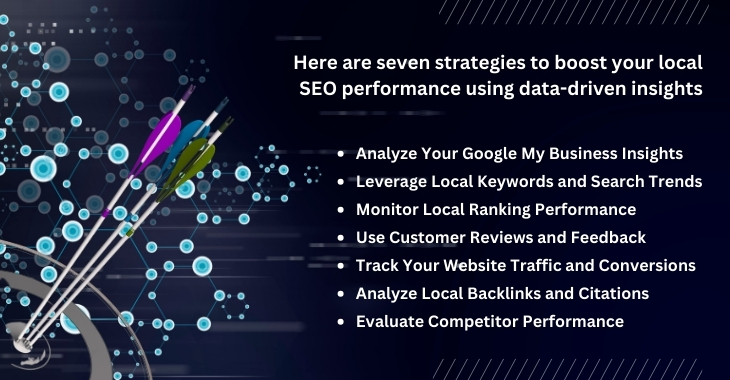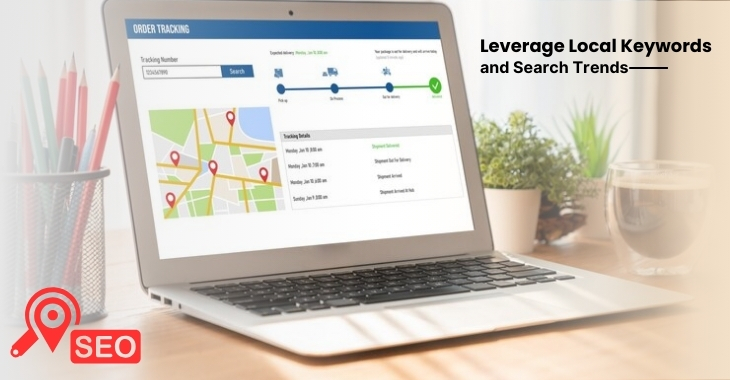

 18 September, 2024
18 September, 2024
 0 comments
0 comments
Local SEO is essential for companies trying to draw clients in their local area. But improving your local search visibility requires more than standard SEO techniques; it necessitates a data-driven strategy that allows you to make well-informed decisions and assess the results of your work. If you want the best Professional Local SEO Company In India, reach out to Performance Marketing.

Here are seven strategies to boost your local SEO performance using data-driven insights:-
1. Analyze Your Google My Business Insights
2. Leverage Local Keywords and Search Trends
3. Monitor Local Ranking Performance
4. Use Customer Reviews and Feedback
5. Track Your Website Traffic and Conversions
6. Analyze Local Backlinks and Citations
7. Evaluate Competitor Performance
One of the most effective tools for local SEO is Google My Business (GMB). Detailed information about how buyers engage with your listing is one of its primary benefits. GMB offers information on how people find your company (via maps or search), what they do (such as visiting your website, contacting you, or asking for directions), and where they are. By routinely examining these insights, you can identify the aspects of your listing that are performing well and those that require development, like improving your business description or promoting reviews.
The core of any SEO plan is keyword research. Finding and focusing on keywords that contain your area is part of local SEO. Using tools like Google Keyword Planner, SEMrush, or Ahrefs, you can monitor search trends and determine what terms your target audience uses to find local services or goods. Keep an eye out for local events and seasons that could influence search behaviour, and appropriately modify your targeting and content. By using data-driven keyword research, you can concentrate on phrases with a higher chance of bringing in local visitors.

Monitoring your local keyword ranks is crucial to comprehending your SEO development. You can see how your website ranks for the local terms you want to target with tools like BrightLocal, Moz, or Google Search Console. You can see changes, measure advancements, and discover areas that require more focus by often checking your rankings. Your on-page SEO, local citations, or link-building approach may need to be adjusted if your results decline or plateau.
In addition to being crucial for establishing credibility, customer reviews directly affect your local search engine rankings. Positive reviews indicate relevancy and dependability, so search engines prefer companies with them. Information from your review sites (like Facebook, Yelp, or Google Reviews) can give you important insight into what people enjoy and don’t like about your company. Your local SEO performance can be improved by addressing service gaps, improving customer satisfaction, and honing your products through analysing this input.

You can monitor your website’s performance and learn how local visitors engage with your content using tools like Google Analytics. Examine your traffic sources, including direct visits, referral links, and organic search, and determine which sites draw in the most local visitors. Tracking conversions is also very important. Are local users making purchases or completing other desirable actions, such as completing contact forms? By examining this data, you can find ways to improve your website’s content, calls to action, and design to better serve local users.
Enhancing your local SEO requires backlinks and citations or references to your company on other websites. Keep an eye on the quantity and calibre of backlinks from local sources to your website using tools like Ahrefs or Moz. Local business directories, industry blogs, and news websites are examples. You can ascertain whether your backlinks are authoritative and relevant with data-driven analysis. Inconsistencies might hurt your local rankings, so ensure your company’s NAP (Name, Address, Phone number) is the same on all platforms.
An integral component of a data-driven local SEO strategy is competitor analysis. Examining your competitors’ local SEO efforts might unearth important insights about their strengths and flaws. Use tools such as SpyFu or SEMrush to monitor your rivals’ backlink profiles, keywords, and rankings.

Enhancing your local SEO performance is a continual process that requires frequent data collection, optimization, and monitoring. If you want the best Professional Local SEO Company In India that helps you to drive leads, contact Performance Marketing.